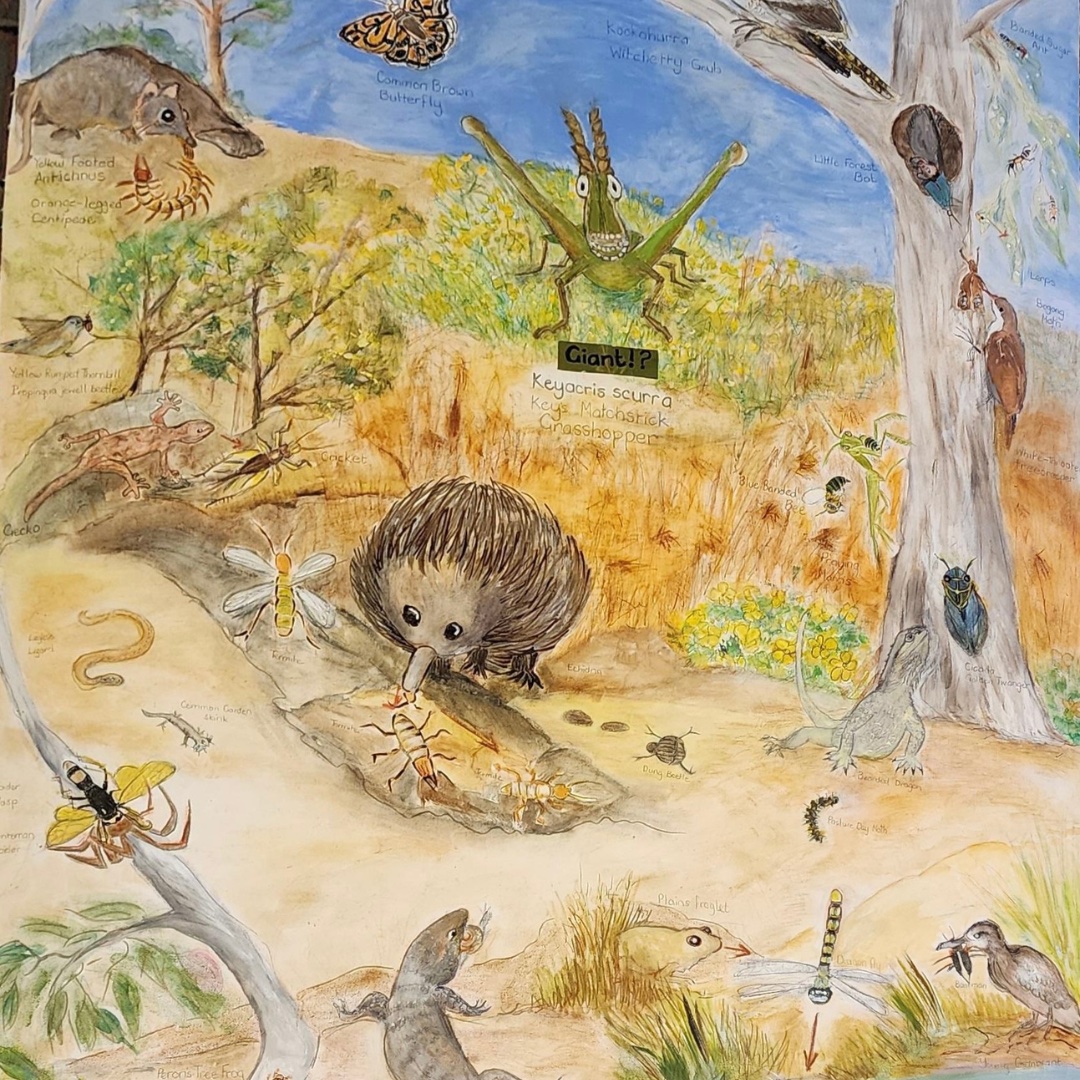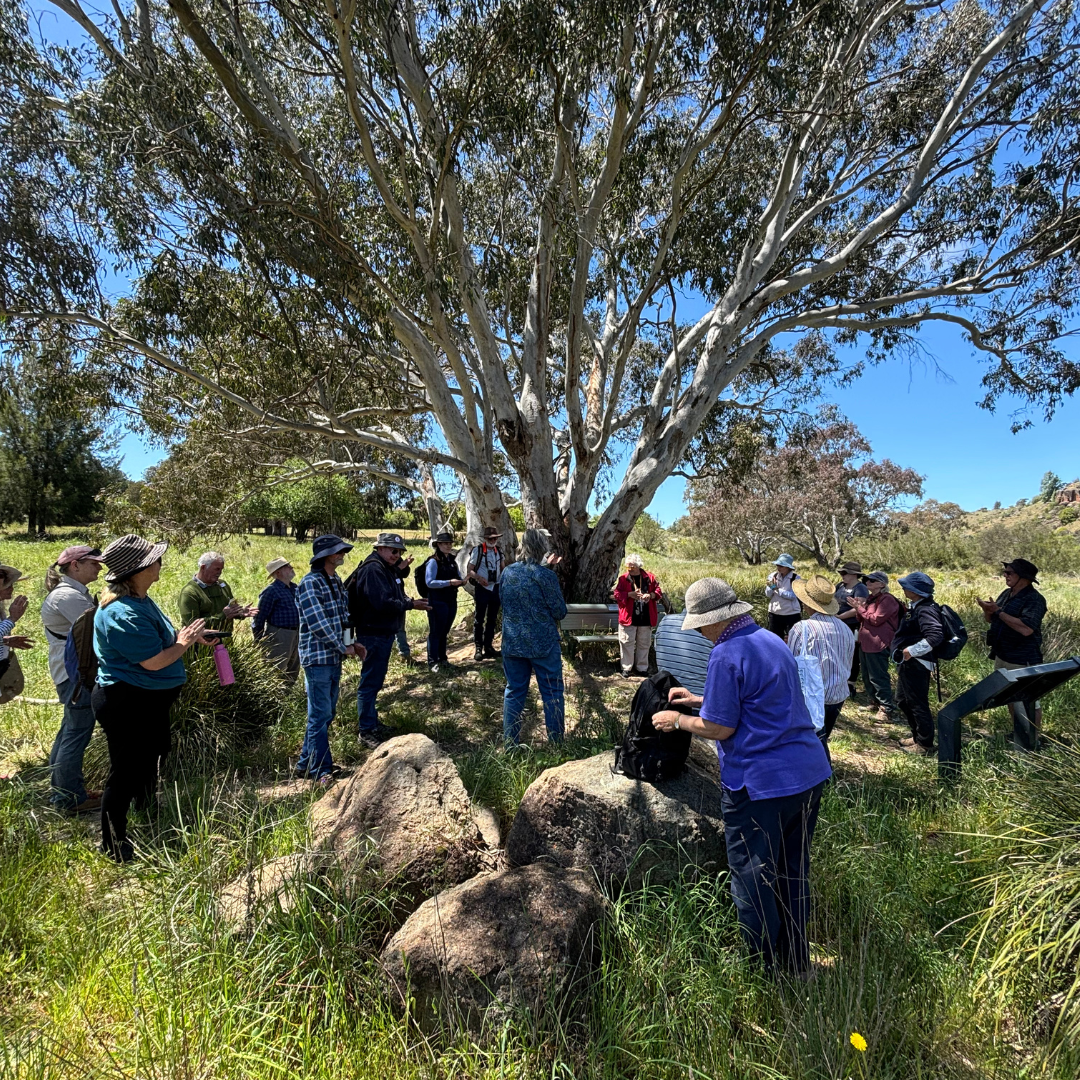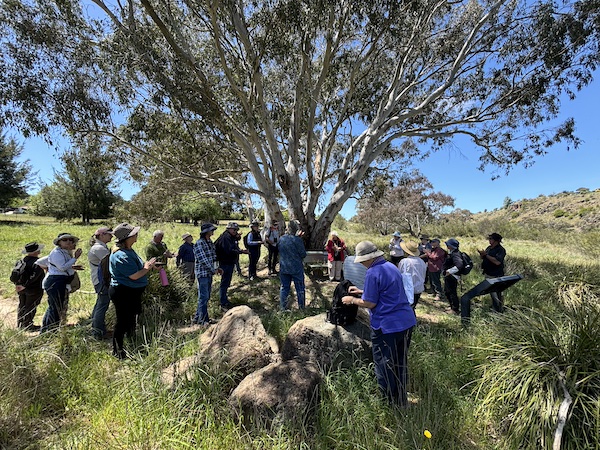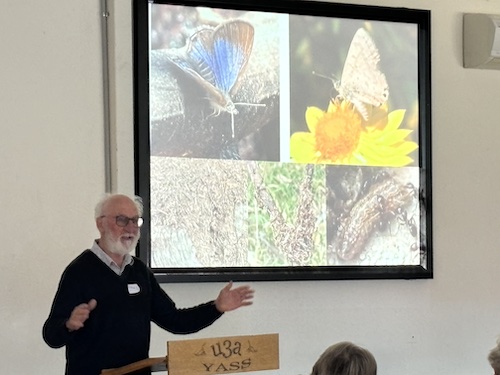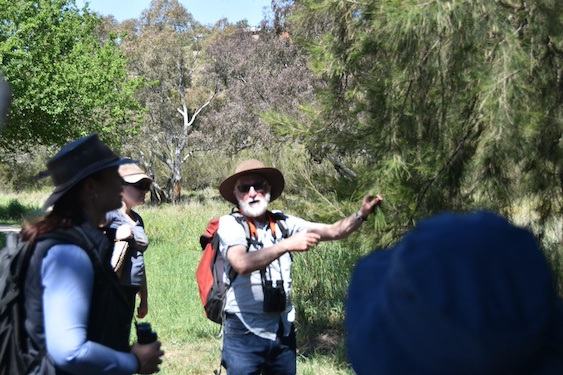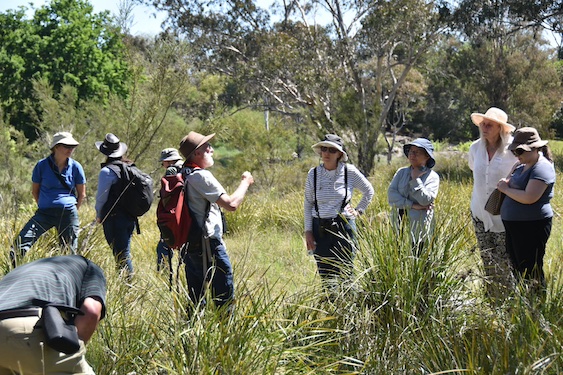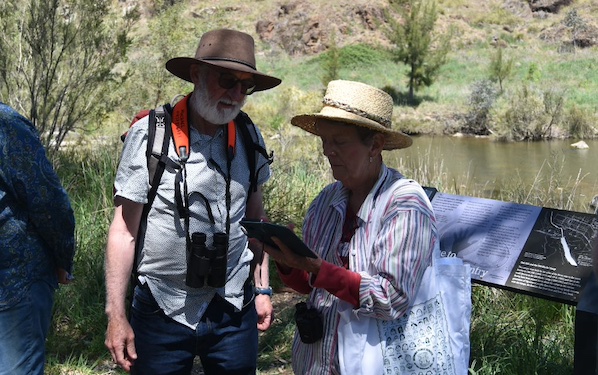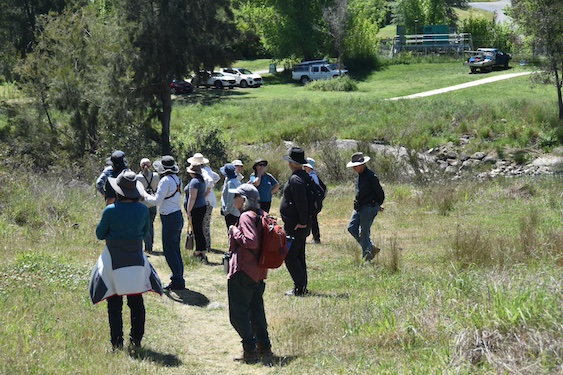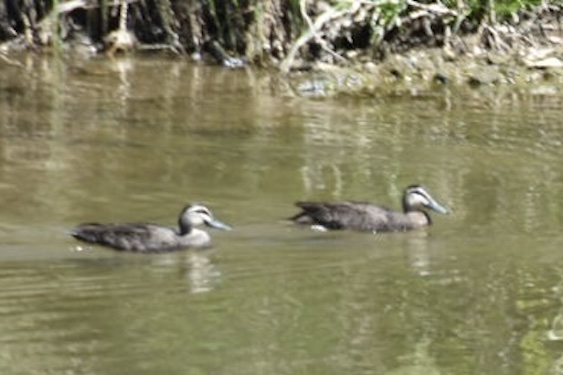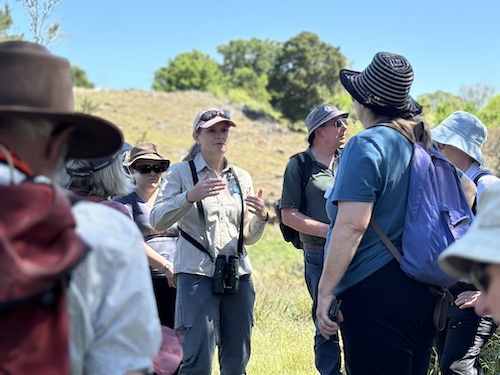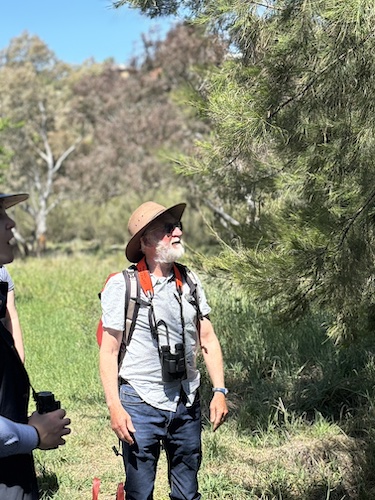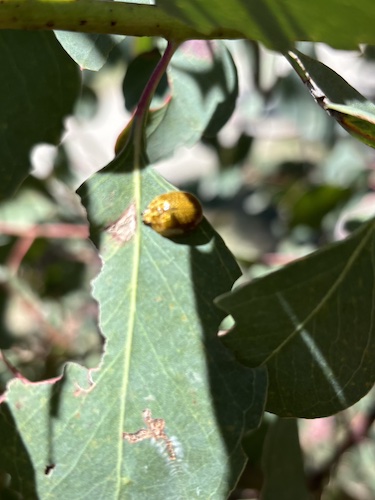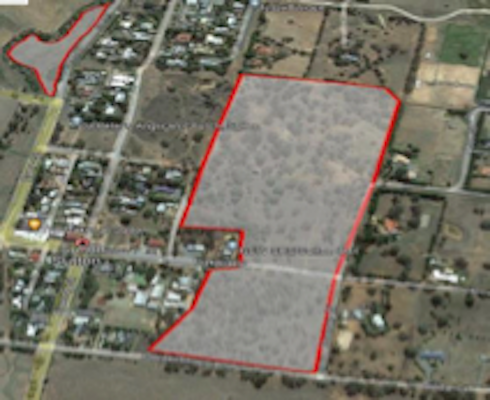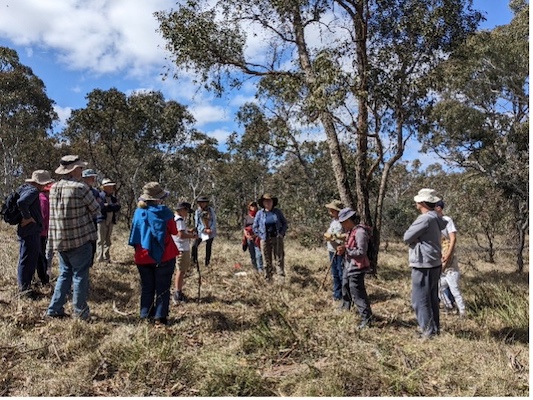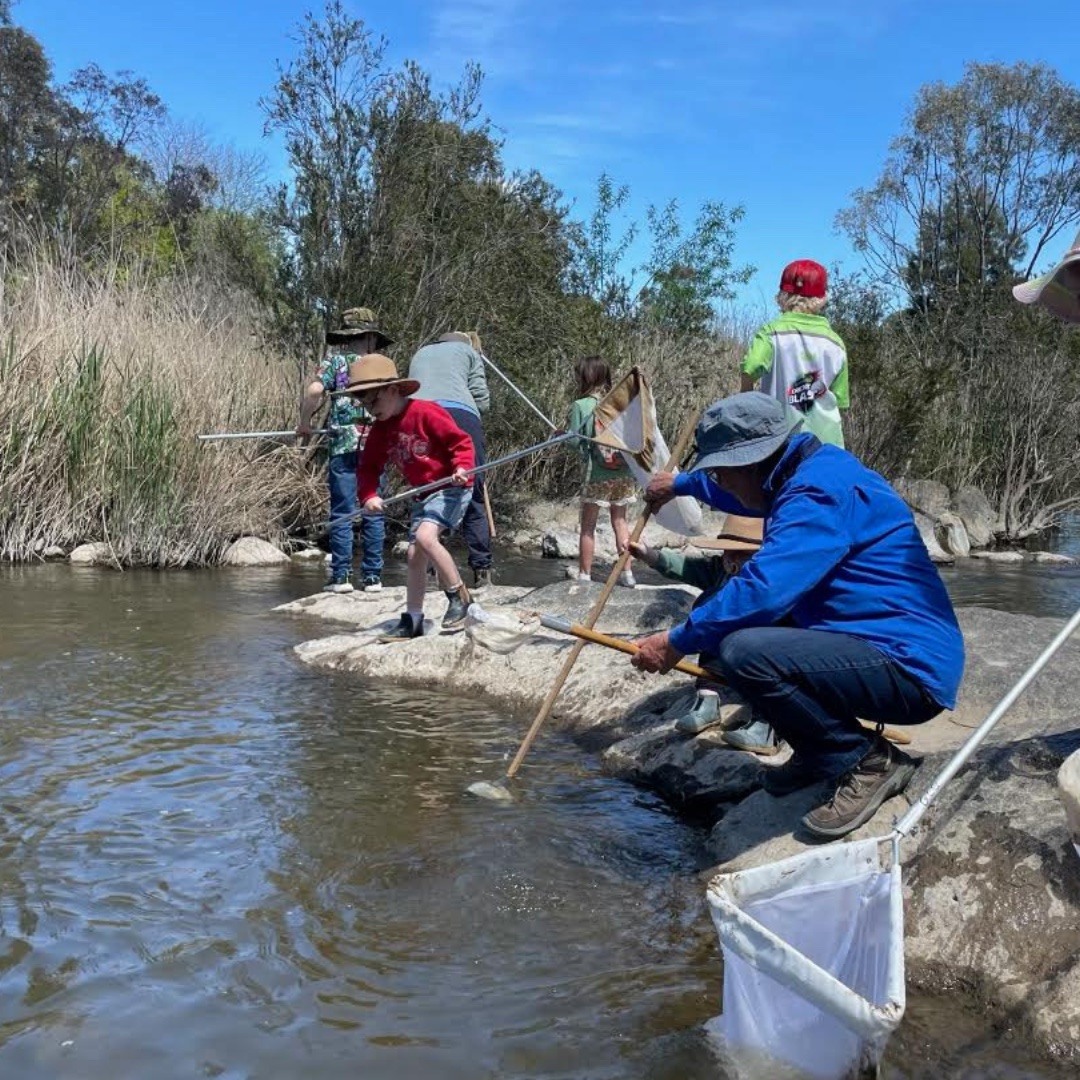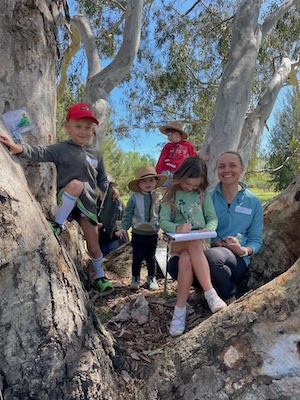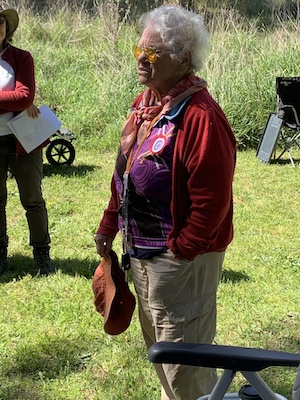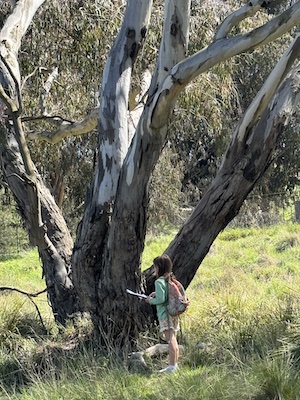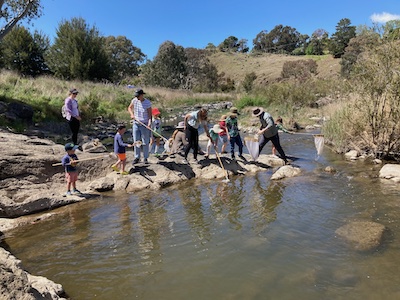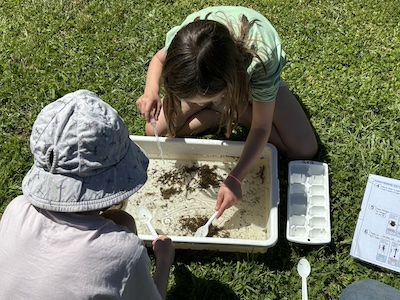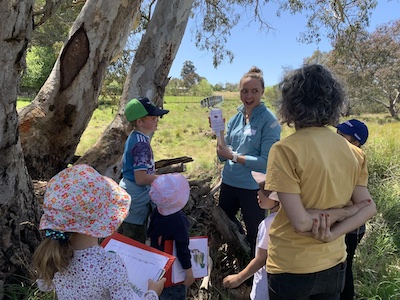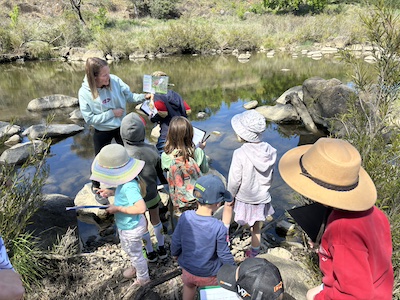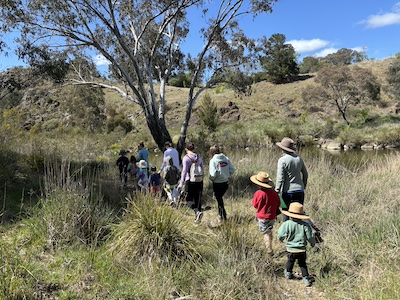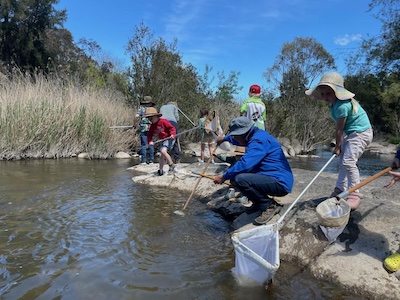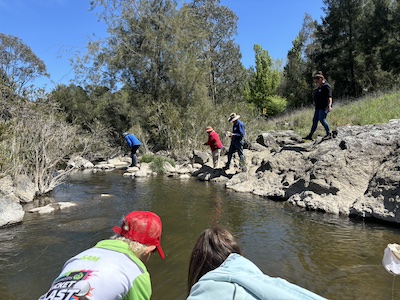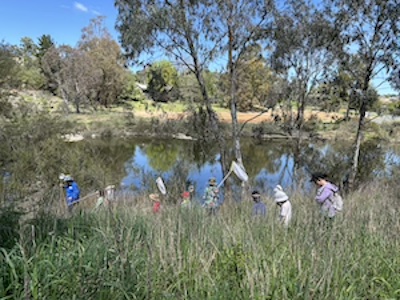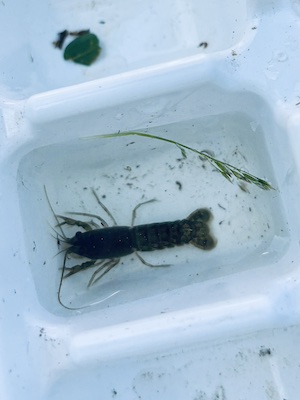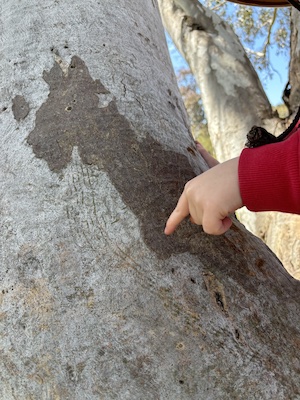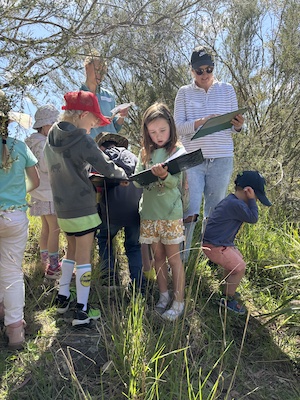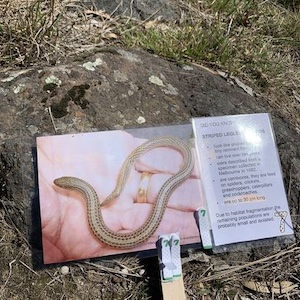The 2024 Murrumbateman Field Days showcased biodiversity, colour, and curiosity as the Murrumbateman Landcare Group brought to life the theme “Insects in the Web of Life.” Designed to draw attention to the vital roles insects play in our ecosystems, the display captured the imagination of visitors of all ages.
At the heart of this year’s event was a stunning artwork by Landcare member and artist Janette Hannan. Janette’s creation depicted a fascinating local landscape alive with insects and other animals, each species intricately interwoven in a tapestry of life and predation. This remarkable piece brought into focus the complexity and beauty of our local ecosystems, from predators to pollinators. Adding depth to the display, Janette also shared information and images of the endangered Key’s Matchstick grasshopper, found at Murrumbateman’s Crown Reserve. Alongside this rare and remarkable grasshopper, her vibrant illustrations of butterflies, moths, and lady beetles created a colourful backdrop, drawing visitors into a world often overlooked.
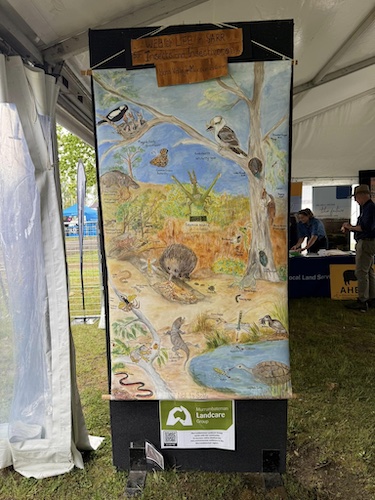
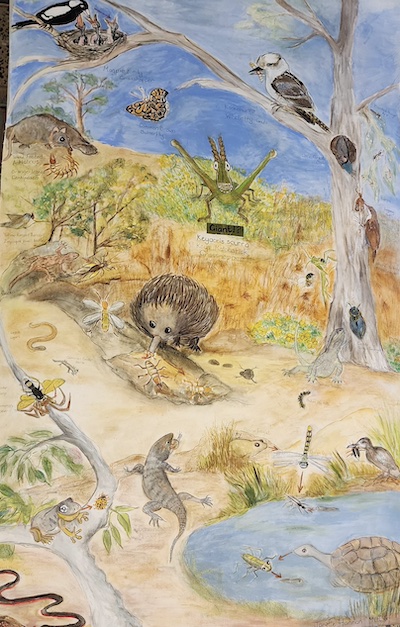
Field Days are always an opportunity for hands-on learning, and this year was no exception. Over 120 children took part in the Insect Hunt activity, scouring the display to find images of twelve different types of insects hidden throughout the tent. The excitement was contagious, and every child who completed the hunt took home a special sticker featuring Janette’s beetle and butterfly artworks. Many children, and adults alike, enjoyed examining insect samples under magnification, marvelling at the details of tiny creatures up close. A yabby in pond water was a particular crowd-pleaser, sparking questions and interest in aquatic habitats.
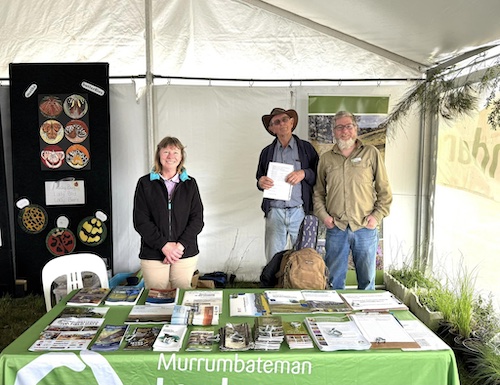

Landcare’s collaboration with ACT for Bees brought a fresh perspective on Sunday, as Julie Armstrong delivered an engaging talk on the importance of planting for pollinators. Her insights highlighted how both farms and home gardens can become havens for pollinating insects, supporting biodiversity and enhancing productivity. It was an inspiring reminder of the power of planting and planning to make a difference in our ecosystems.
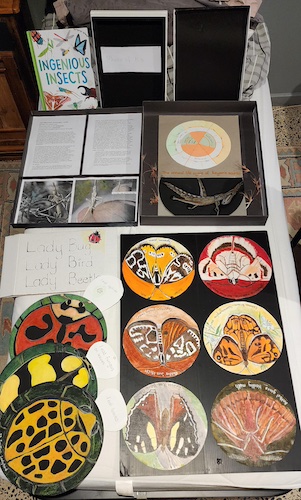
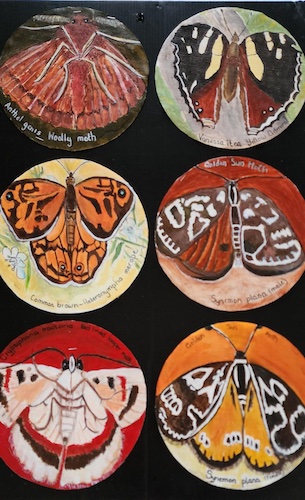
Like each year the tent was fileld with plants from the Landcare nursery, which were freely shared with visitors eager to introduce native plants into their own landscapes. Throughout the day, discussions sprang up about the role of Landcare, habitat restoration, and how individuals can contribute to conservation.
The Field Days also hosted a range of complementary displays, with representatives from Local Land Services (providing the tent), Birds Australia, and organisations addressing the challenges of feral animals and weeds. The message was clear: Landcare is about collaboration, education, and community action.
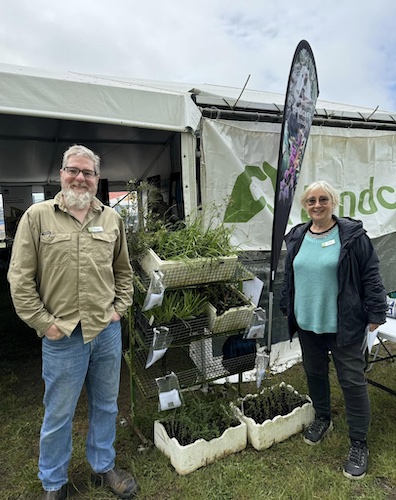
We extend heartfelt thanks to the many volunteers who made the day possible, the speakers, and, of course, everyone who came along. It was a pleasure to see so many enthusiastic faces and to feel the energy of a community united by its passion for the land and all its inhabitants.

Written by Sarah McGrath, Local Coordinator


